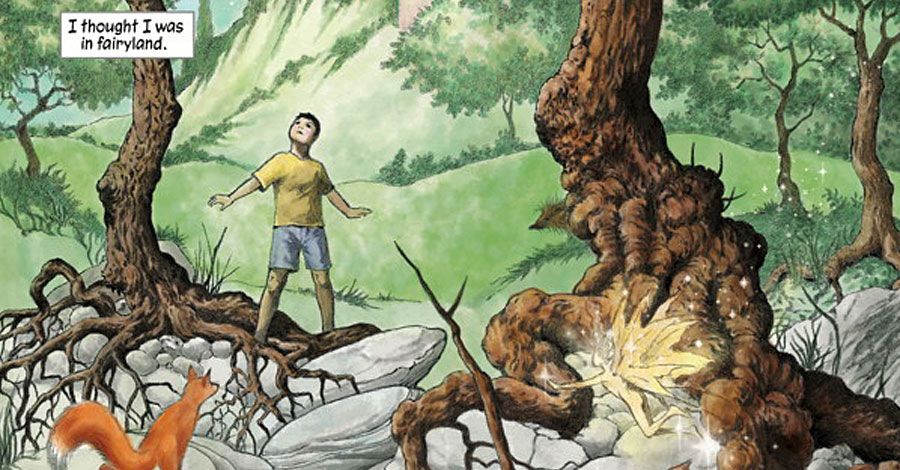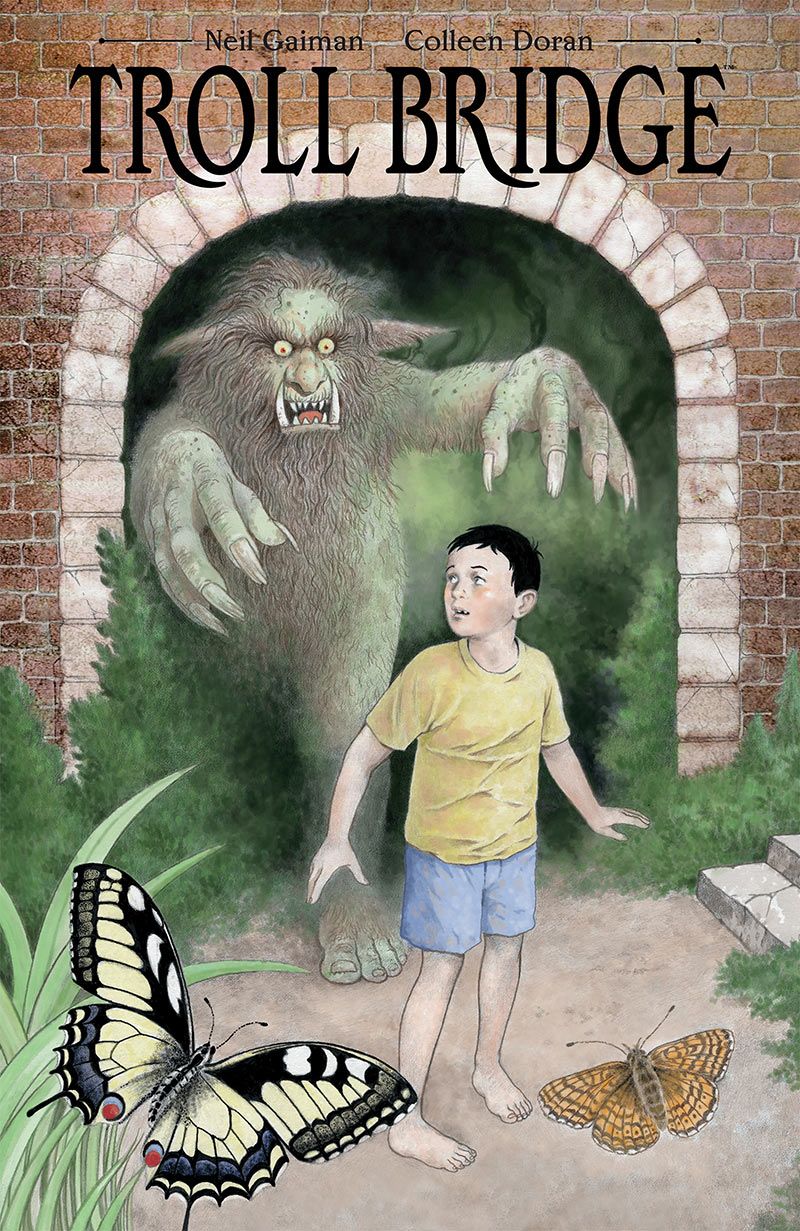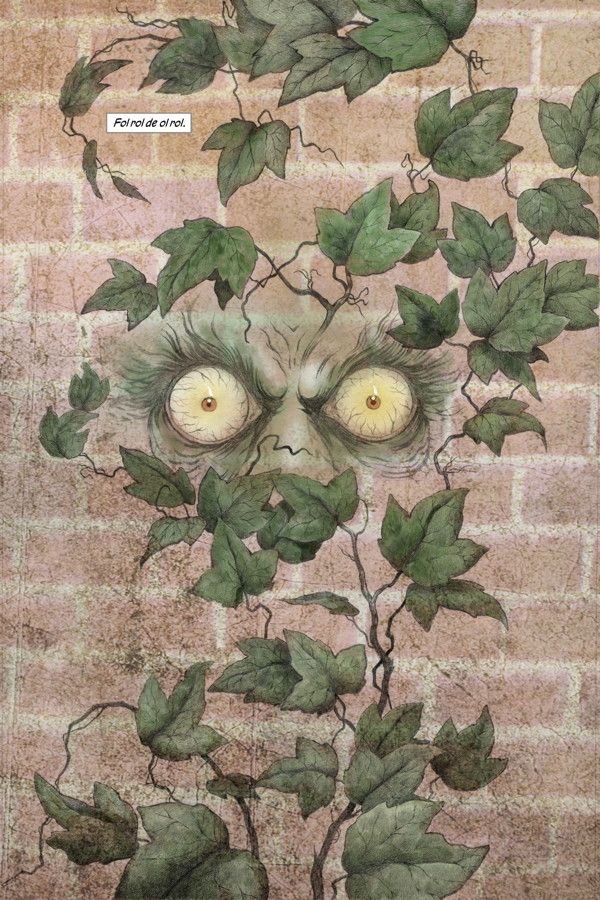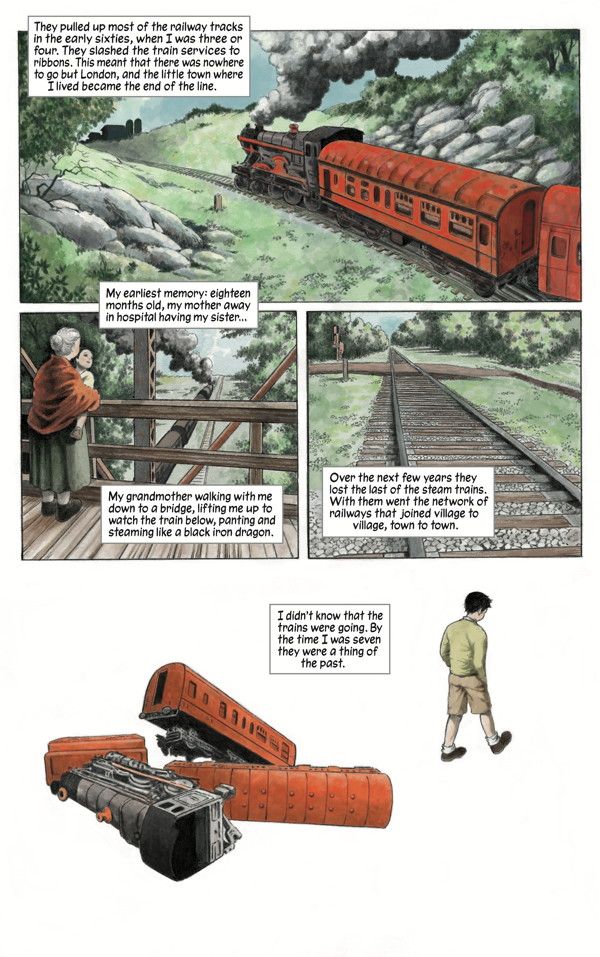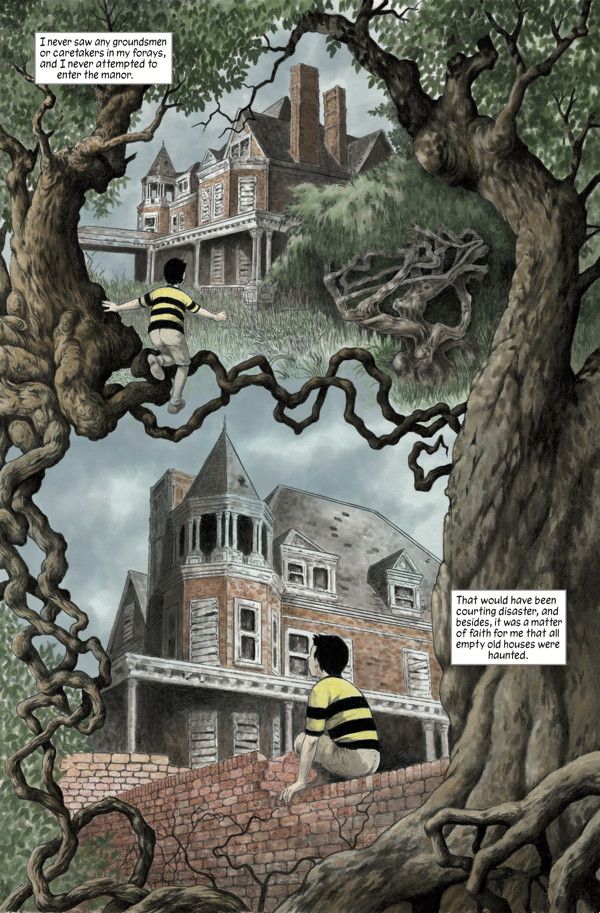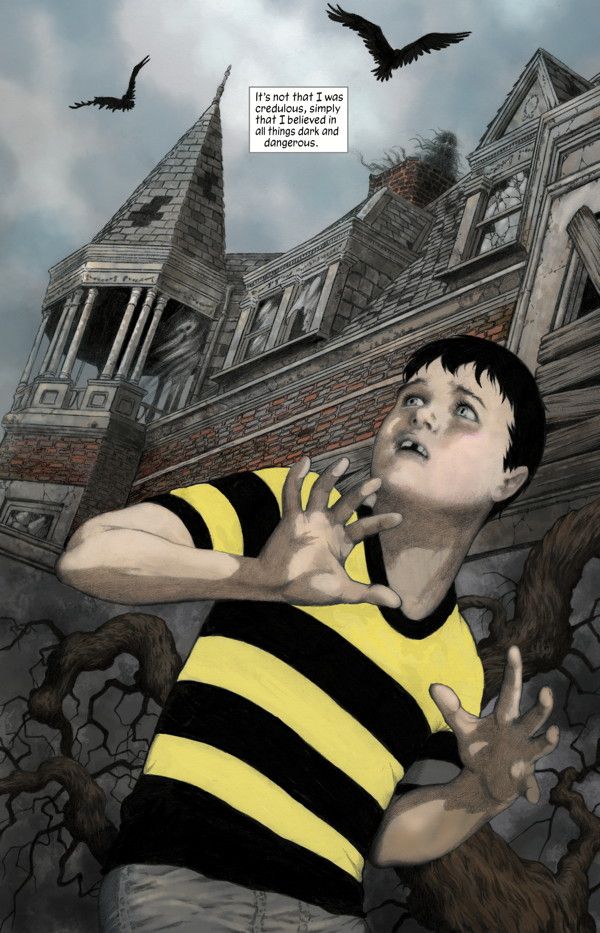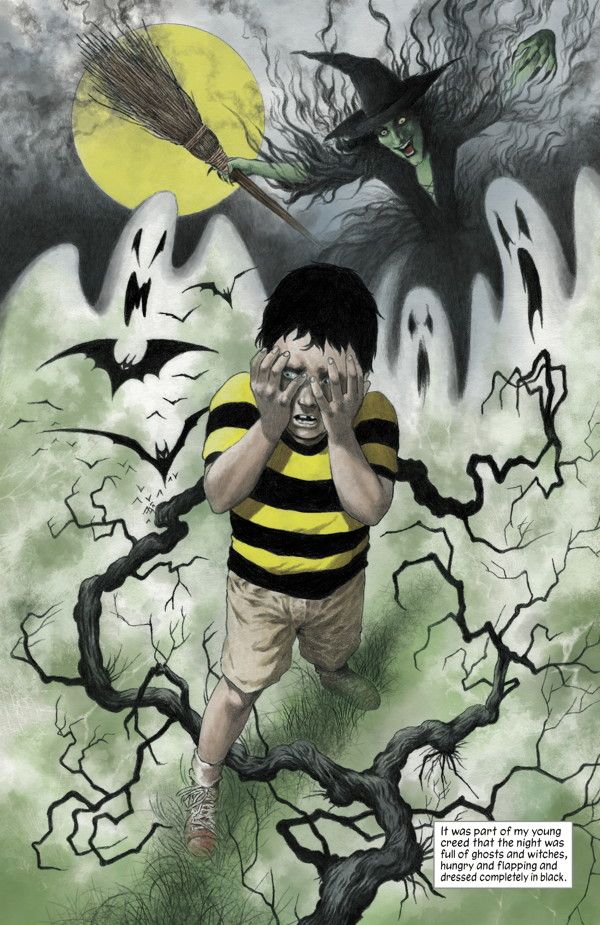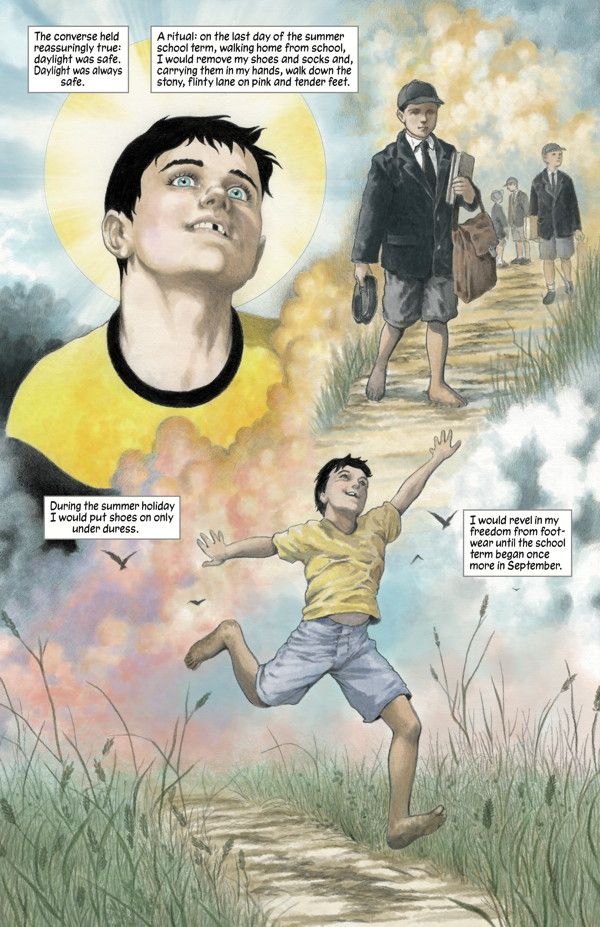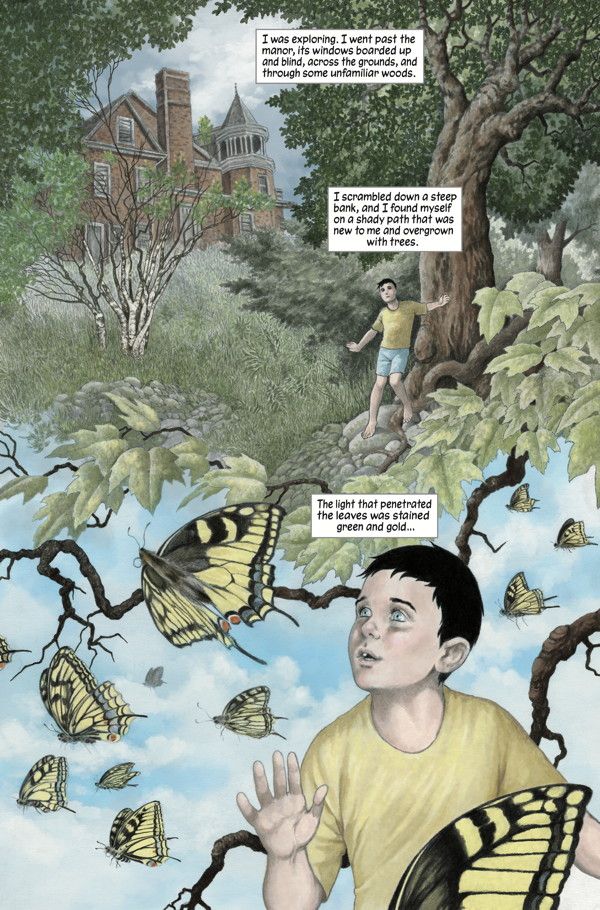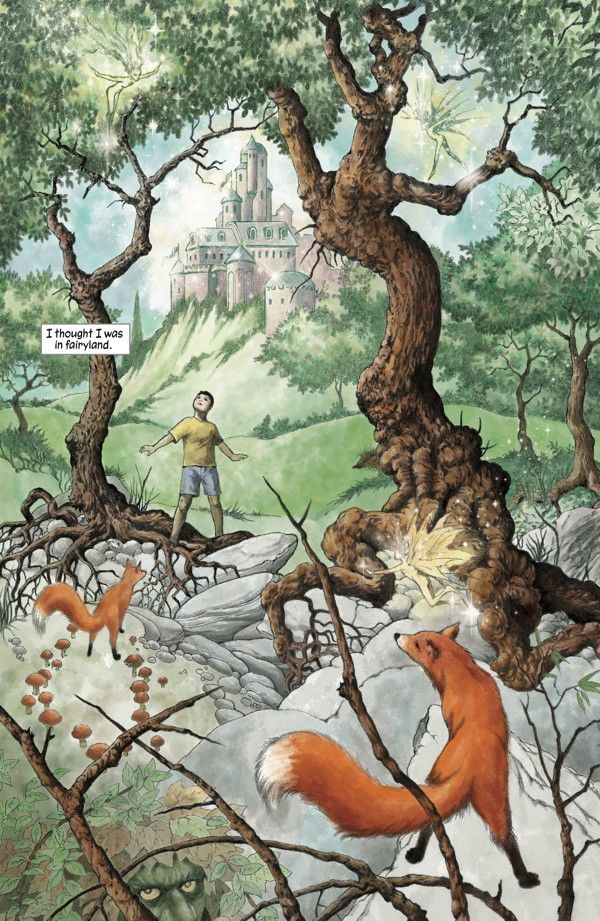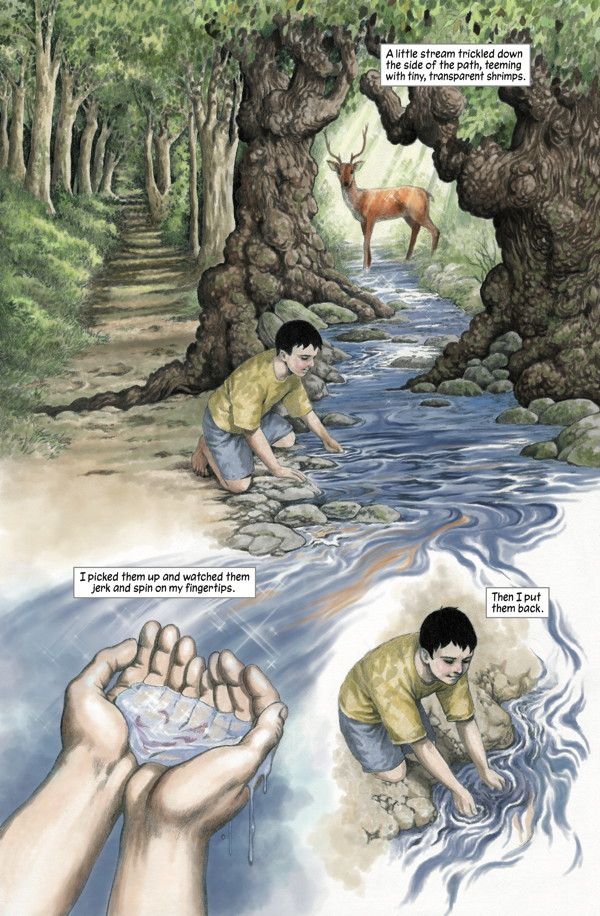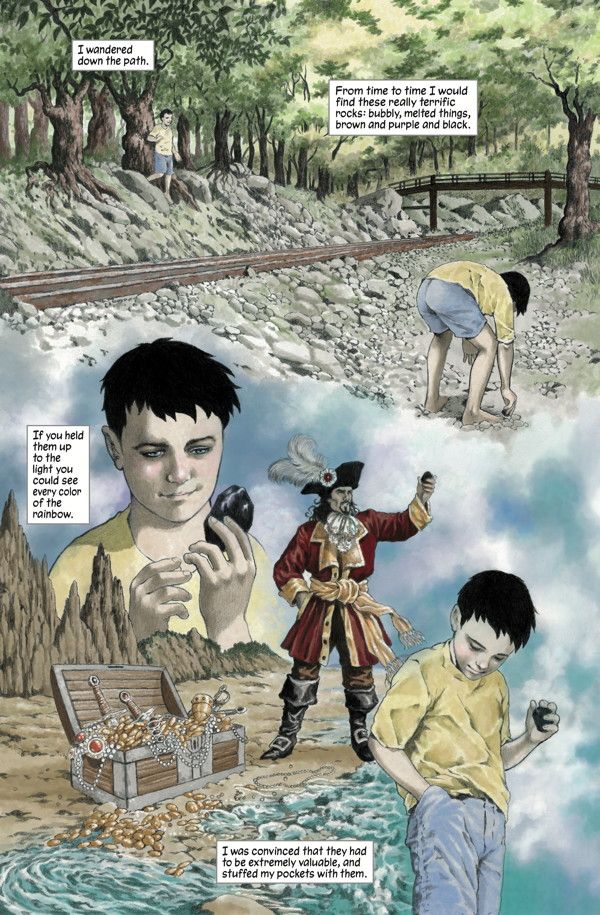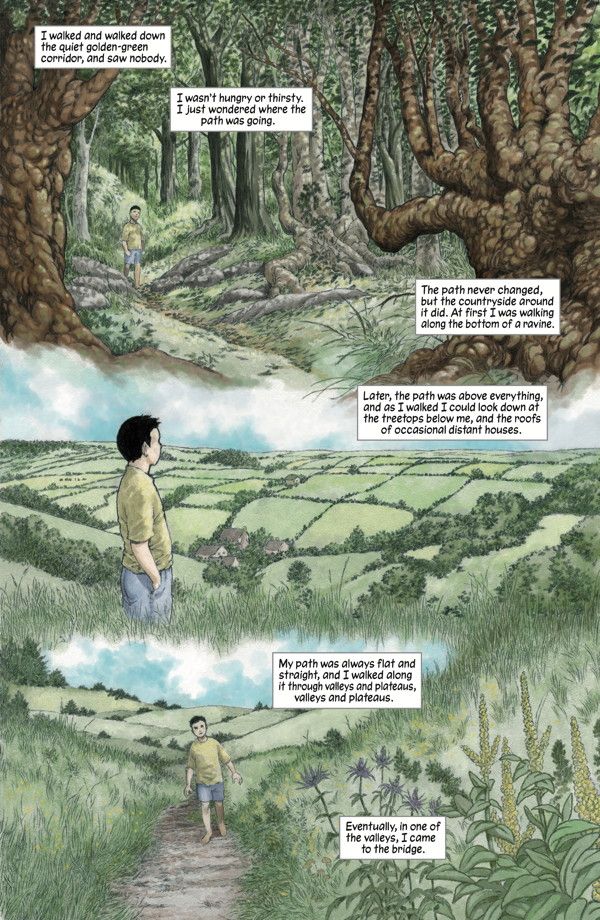Neil Gaiman first made his mark on the literary world as a comics writer, and although he still dabbles in the field, he's predominantly written in other arenas -- novels, screenplays, children's books, essays, short fiction -- over the past decade and a half. Fortunately for fans of his comics work, a number of those projects have been brought into the sequential art world by a series of very talented artists.
Colleen Doran's initial collaboration with Gaiman was on "Façade" in 1990's "Sandman" #20." In the years since (and, frankly, before), Doran has worked with many of the industry's top writers and won acclaim for her artwork on a variety of projects -- "Orbiter" with Warren Ellis, "The Book of Lost Souls" with J. Michael Straczynski, and "Gone to Amerikay" with Derek McCulloch, among many more, including her creator-owned sci-fi space opera "A Distant Soil."
Doran reunites with Gaiman in October with an adaptation of the dark coming-of-age fable "Troll Bridge" from Dark Horse Comics. The short story, which first appeared in the anthology "Snow White, Blood Red" in 1993, has also appeared in two collections of Gaiman's short fiction.
CBR News: When did adapting "Troll Bridge" come up to you as a possibility? Were any other stories considered?
Colleen Doran: Neil used to fax me his short stories back in the day when people still used faxes, and he would talk about how nice it would be to see them adapted as stories. He sent me "Murder Mysteries" and "Troll Bridge" around the same time, and I recall him saying he thought "Troll Bridge" would be more of a challenge for me, so he would prefer I did that one.
I was more attracted to "Murder Mysteries," frankly, but I gave "Troll Bridge" a go as a black-and-white pen-and-ink exercise that was published back in the 1990s. I don't think it came off very well. I always felt funky about it, and years later, re-reading it, I think I had a much better understanding of the story and how to approach it. I felt really haunted by it.
Neil said some very kind things about a new art technique I'd developed working on Tori Amos' "Comic Book Tattoo," a short story written by Derek McCulloch who also wrote "Gone to Amerikay." I mentioned I'd love to give "Troll Bridge" another go sometime with a better understanding of what the story meant and twenty years of art development behind me. And Neil piped right up that he'd like me to do it.
It's not a question of any other stories considered. I didn't go in there going, "Oh, Oh, please let me draw something for you!" I had very specific reasons for doing this one. I don't really want to just hog space and ask for anything; I want to do only the things I am right for.
You treated this more as an illustrated story rather than a comic -- lots of full- or half-page illustrations and few word balloons. Was there a particular reason for this approach?
It's not an illustrated story -- it's a comic with an illustrative approach to the story. And there are few word balloons, because there is very little talking in the story in the first place. I wasn't going to come up with dialogue that has no reason to be there. Most of the talking is internal monologue -- how weird would it be to have the guy yakking to himself in the middle of the woods?
Jack is a very self absorbed character, and about the only being he talks to in the story is the Troll. There's a deep psychological reason for that, and padding it with chatter would ruin the sense of disconnect and social isolation.
Also, the intent of the art is to flow, not to be a series of beats. It is there to create mood and sensation -- the sense of time is as disconnected as the social sensibility.
All comics don't have to be the same, and the storytelling technique doesn't have to be the same.
You wrote on your blog that you were contracted for this book in a different style than what finally saw print. How did it evolve as you immersed yourself in these drawings?
You misunderstand what I wrote. I did not redraw the story as I went along, I repainted it. The original coloring technique I developed was developed with the Tori Amos book in mind, which I did in a mixed media style of pencil, digital, handmade paper, oil emulsion, watercolor, and gold and silver leaf. It looks great over a limited space, but I found it very distracting over the long term. There was too much texture, it was too self-consciously arty. I felt it distracted from the sense of place necessary for the inner meaning of the story.
I decided to approach the painting in a very golden age of illustration way, which was a much better approach on all levels. It not only provides a visual reference for the coming of age meaning of the story on a subconscious level, but it fixes the work in the bucolic English countryside which is very important to the story.
It's a laborious style, and it just takes a really, really long time. I'd spend days on colors for an individual page.
How involved was Neil Gaiman in this adaptation?
Not very, actually, except that he seemed pretty happy with it. I mean, I wrote the adaptation as well; he didn't ask for any changes.
You've worked with Neil as a comics writer and adapting his prose. He's a very visual writer, even in his prose. How different was the process of breaking down the story beats and making this story flow visually compared to illustrating one of his comics scripts?
I really didn't have much trouble with it. I spent a lot of time thinking about it, but by the time I stopped processing and sat down and put it on paper, it only took about two days. I had a very strong idea of how I wanted to go.
This doesn't mean it was easy, but I rarely do anything without thinking about it a lot before I commit to the fixed work.
What's the status of "A Distant Soil"?
I may finance the end with crowdfunding. Bringing all the backlist back into print, restoring all the work after our printer lost all our negatives, and spending about three years digitally fixing everything and getting new editions out, it was hugely expensive and time consuming. My assistant is working on the restoration of "Volume III" right now.
I've been quietly working on the story for the final volume for a while. I have eight issues of the comic left. Jim Valentino at Shadowline has been incredibly supportive. The man is a saint.
Any other recent projects fans should look for or upcoming projects you can talk about?
Well, some stuff I can't talk about of course, but I did finally sign a contract with Matt Hawkins and Top Cow that we've been batting around forever. I've been doing some really fun work at Valiant on "Faith" and another book. I'm not sure I'm allowed to talk about it at this juncture. I just signed another contract with another major writer. So, that's a good deal of stuff right now. It's a good time; I am having a lot of fun with comics right now, and I'm able to get out and go to conventions, too. It's nice.

